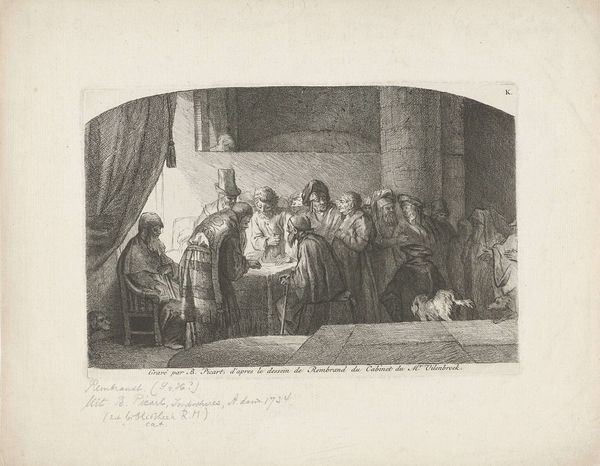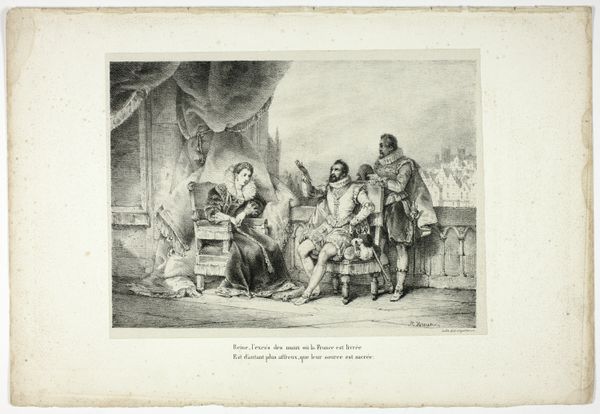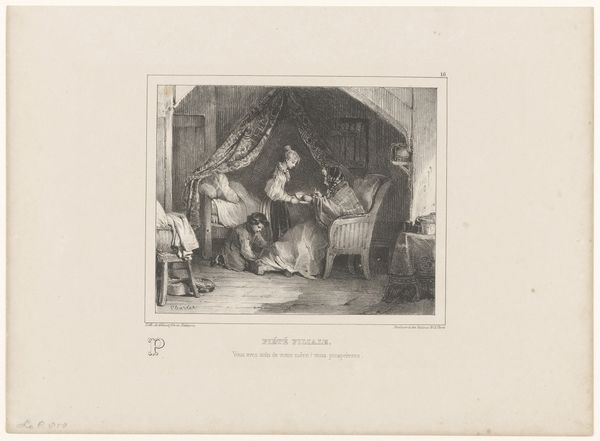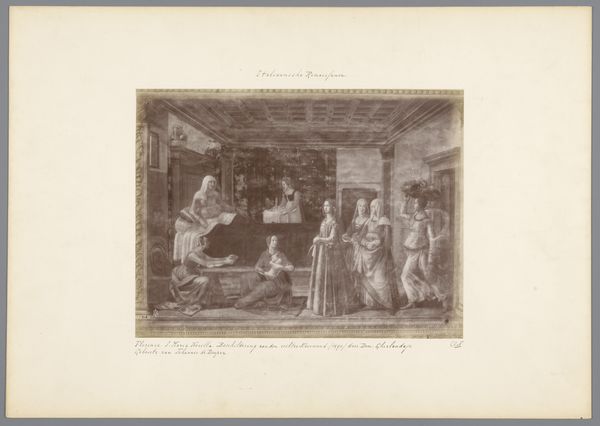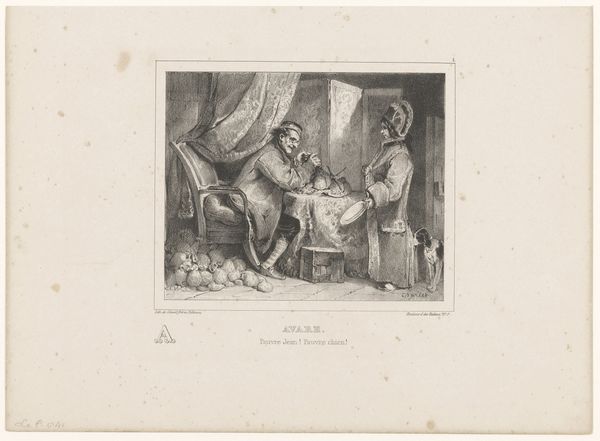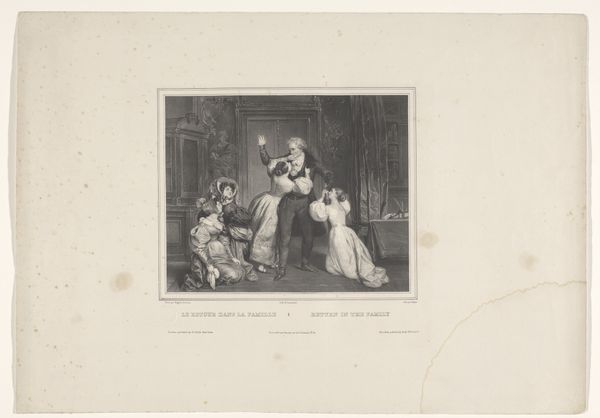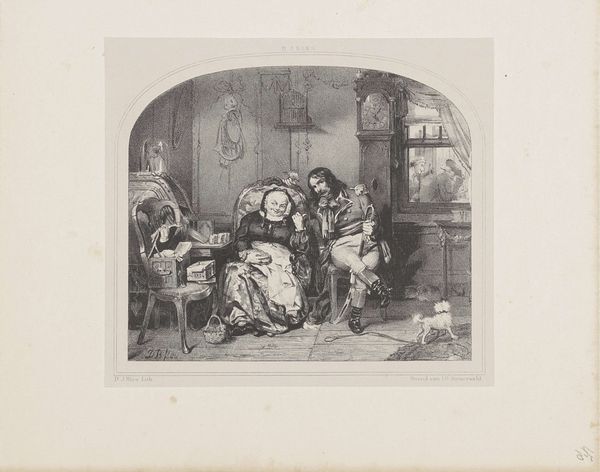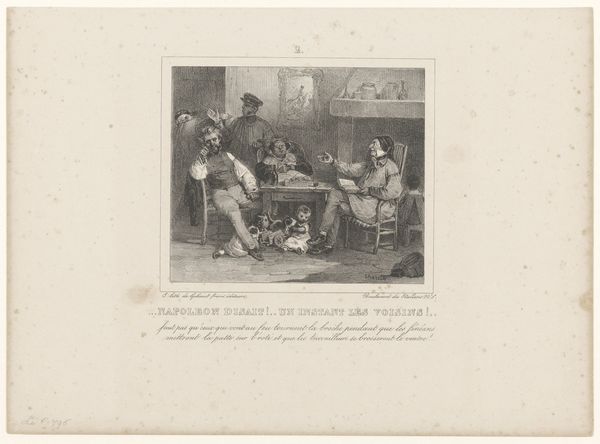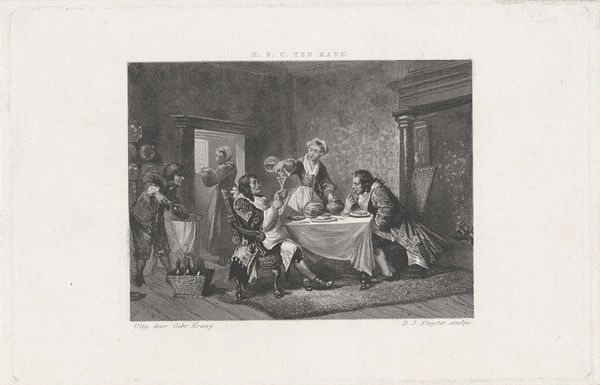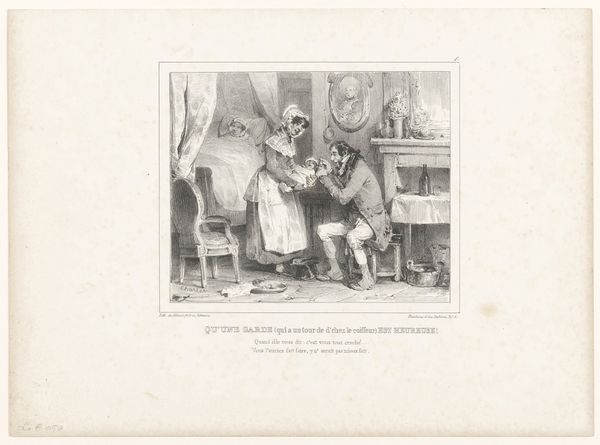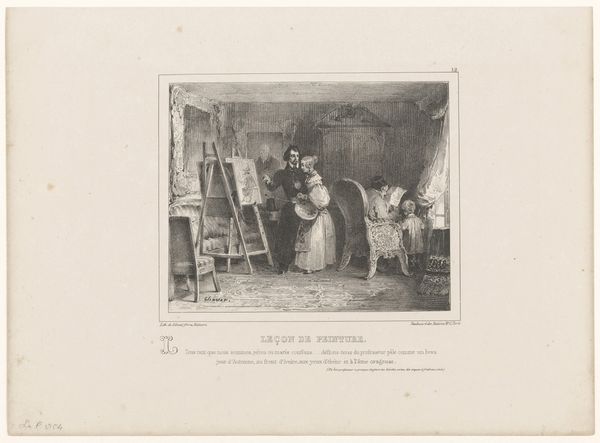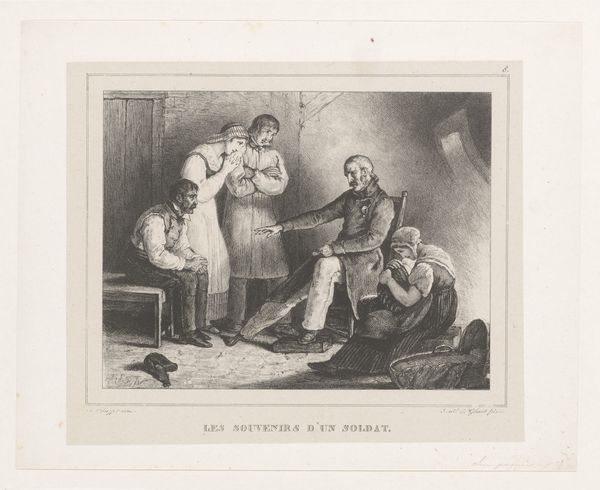
drawing, lithograph, print, paper, ink
#
drawing
#
narrative-art
#
lithograph
#
ink paper printed
# print
#
paper
#
ink
#
romanticism
#
genre-painting
Dimensions: 163 × 223 mm (image); 287 × 404 mm (sheet)
Copyright: Public Domain
Curator: Auguste Raffet's 1831 lithograph, "The Best Singer," offers a captivating glimpse into a moment of domestic entertainment, and can be found here at the Art Institute of Chicago. Editor: It’s so dense! All those textures packed into this small scene create a lively, bustling atmosphere. The contrast between light and shadow really pulls the eye across the composition. Curator: Lithography as a process allowed for broader dissemination of images like this one, playing a crucial role in shaping popular culture in 19th-century France. Raffet was celebrated for depicting military life. It provides insight into the soldier's interaction with civilian populations, shaped, in part, by social perceptions around Napoleon and post-Napoleonic France. Editor: The artist’s strategic use of hatching and cross-hatching in the ink seems to simulate light and shadow. Notice how the light catches on the singer's uniform, contrasting the darker tones of the humble interior setting. It certainly gives the eye a lot to explore and hold. Curator: Absolutely, and beyond just representing a scene, the materials themselves would be relatively cheap and easily available at this time which reinforces the narrative; lithography made it accessible for more people to have prints in their homes of what was happening at this time. So its existence points to new modes of accessing art through its production process, breaking with older modes tied only to wealthy buyers. Editor: I hadn’t thought of it that way. For me it boils down to line quality and how Raffet utilizes the tonal range. The faces, for example, feel incredibly alive and invite storytelling on their own. There's a captivating sense of depth given that there’s such detailed work across a confined picture plane. Curator: It's really interesting to consider how Raffet captured and disseminated moments in the everyday through an emergent graphic technology. It really captures a certain mood in post-Napoleonic France! Editor: I agree! Studying how the technique complements the thematic elements shows real attention to detail from Raffet.
Comments
No comments
Be the first to comment and join the conversation on the ultimate creative platform.

